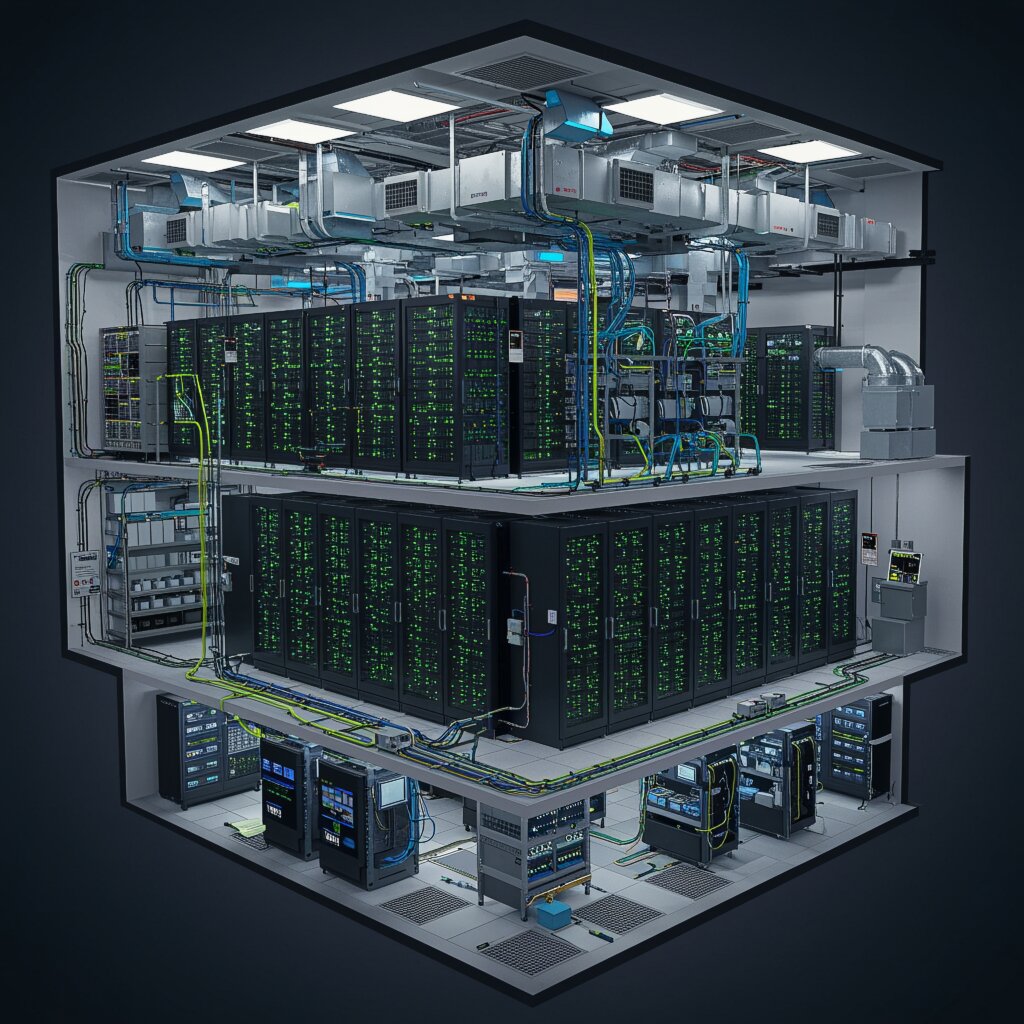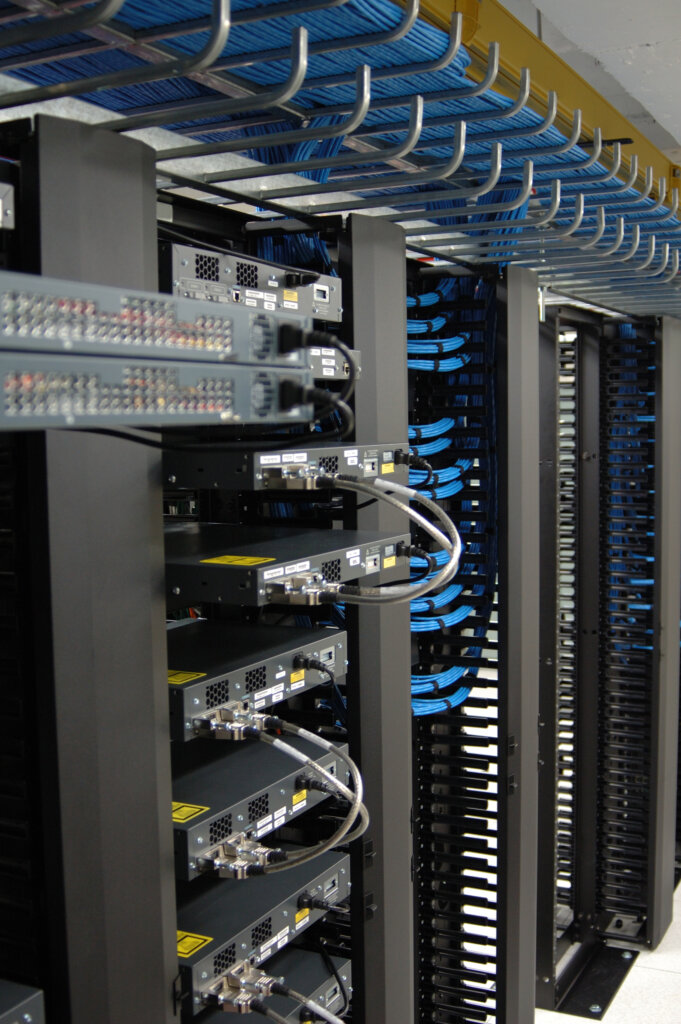Every digital interaction (whether a click, a stream, or a cloud transaction) relies on a meticulously engineered network of energy systems operating in seamless coordination. Data center power infrastructure forms the backbone of continuous digital business operations, yet its complexity often remains unnoticed until a power disruption or outage occurs. For data center operators, a comprehensive grasp of power distribution, redundancy, and resiliency is not just beneficial but essential to maintaining uninterrupted service.
Building a robust power strategy requires a deep understanding of these elements, as well a deep understanding of additional critical components which encompass a data center power solution. Operators must ensure that electrical systems are designed to manage routine operational loads while also providing the flexibility and resilience needed to address unexpected power events and anomalies. In today’s always-on digital economy, the ability to anticipate and mitigate power-related risks is a defining factor in operational success.
This article addresses the foundations of power distribution, redundancy, and resiliency; and introduces Trystar’s solutions-based approach.
Power Distribution
Power distribution is the backbone of data center operations, channeling electricity from the utility grid or alternative sources to every critical component within the facility. Effective power distribution ensures that racks, servers, cooling systems, and ancillary infrastructure receive consistent and reliable energy, forming the foundation for uninterrupted digital services. As data centers scale to accommodate growing computational demands, the complexity of power distribution architecture increases, making robust design and implementation essential for operational continuity.
Adhering to power distribution best practices is vital for maintaining efficiency, safety, and scalability. Well-structured distribution systems minimize energy loss, reduce the risk of electrical faults, and support compliance with industry standards. They also provide the flexibility needed to expand or reconfigure infrastructure in response to evolving business requirements, ensuring that new equipment can be integrated without compromising existing operations or safety protocols.
Three-phase uninterruptible power supplies (UPS) are integral to modern power distribution strategies, stabilizing incoming power and protecting sensitive IT equipment from voltage fluctuations, surges, and outages. By delivering a continuous, clean power supply, UPS systems mitigate the risk of costly downtime and data loss, supporting the high availability that mission-critical applications demand. Advanced UPS technologies further enhance resilience by enabling seamless transitions between primary and backup power sources during utility disturbances.
At the rack level, Power Distribution Units (PDUs) extend stabilized power from the UPS to individual servers and devices. Many PDUs feature sophisticated metering and monitoring capabilities, providing operators with real-time insights into energy consumption, load balancing, and system efficiency. This granular visibility empowers data center managers and operators to optimize power usage, identify potential issues before they escalate, and make informed decisions that drive both operational reliability and cost-effectiveness.

Example cross-section view of a large data center with multiple rows of server racks, well-lit aisleways for technicians, overhead cooling systems, raised flooring with cable pathways, power distribution units, and three phase UPS’s.
Redundancy
Redundancy is a fundamental principle in data center design, serving as a safeguard against system failures that could compromise uptime and digital trust. By incorporating multiple independent power paths and backup systems, data centers can ensure that critical operations continue seamlessly even when individual components fail. This layered approach to infrastructure design is essential for organizations that require uninterrupted access to digital services and data.
One of the most effective redundancy strategies involves the use of dual-corded servers and redundant power distribution paths. Dual-corded servers are equipped to receive power from two separate sources, allowing them to remain operational if one source becomes unavailable. Similarly, redundant power paths ensure that electricity can be rerouted instantly in the event of a disruption, minimizing the risk of downtime and protecting sensitive IT equipment from unexpected outages.

Example of dual-corded servers with redundant power distribution paths.
Redundancy configurations such as N+1 and 2N are widely adopted to further enhance reliability. An N+1 configuration provides one additional backup component for every critical system, ensuring that a single failure does not impact overall operations. In contrast, a 2N configuration duplicates the entire power infrastructure, offering complete system replication for maximum resilience. These architectures are chosen based on the specific uptime requirements and risk tolerance of each data center.
Beyond operational continuity, robust redundancy measures also play a critical role in ensuring the safety of data center operators and managers. By minimizing the need for emergency interventions and reducing the likelihood of hazardous manual switching or repairs during power events, redundant systems help create a safer working environment. Automated failover and clearly defined power paths limit exposure to electrical risks, supporting compliance with safety regulations and best practices.
Redundancy transforms potential points of failure into opportunities for resilience, enabling data centers to deliver continuous, secure, and trustworthy digital services.
Power Resiliency
Power resiliency is a critical attribute of modern data centers, reflecting the facility’s ability to withstand, adapt to, and recover from disruptive power events. Unlike redundancy, which provides backup capacity, resiliency emphasizes the system’s dynamic response to stressors such as extreme weather, grid instability, and sudden power surges. A resilient power infrastructure is engineered to absorb shocks, maintain operational continuity, and rapidly restore stability … minimizing the risk of cascading failures that could compromise data integrity, service availability, and the safety of data center personnel.
Effective power resiliency strategies integrate both permanent and scalable temporary solutions to address a wide range of potential disruptions. Permanent backup generators form the backbone of long-term resilience, providing reliable power during extended utility outages. Complementing these are temporary power systems such as portable generators and load banks, which can be deployed quickly to support critical loads, facilitate maintenance, or bridge gaps during infrastructure upgrades. This layered approach not only ensures business continuity but also reduces the need for emergency manual interventions … thereby enhancing the safety of data center operators and managers during prolonged or unexpected power outages and other high-risk scenarios.
For operators and managers, investing in power resiliency is essential for meeting stringent uptime requirements and protecting the data center’s reputation. Advanced monitoring and control systems further enhance resiliency by providing real-time visibility into power conditions, enabling proactive response and rapid troubleshooting. By prioritizing resiliency alongside redundancy, data centers can deliver uninterrupted digital services, safeguard critical assets, and protect both infrastructure and personnel in an increasingly unpredictable energy landscape.
Emerging AI-Driven Loads
As AI-driven workloads become increasingly prevalent, data centers face unprecedented demands on their electrical infrastructure. Power distribution systems must be engineered for higher density and greater flexibility to accommodate the rapid scaling and dynamic resource allocation characteristic of AI applications. Advanced power distribution architectures ensure that electricity is delivered efficiently and reliably to high-performance compute clusters, supporting both the intense, variable loads and the need for real-time responsiveness that AI workloads require.
Redundancy and power resiliency are equally critical in this evolving landscape. The unpredictable and mission-critical nature of AI-driven operations heightens the consequences of downtime, making robust redundancy through dual power paths, N+1 or 2N configurations, and automated failover; essential for uninterrupted service. Meanwhile, resilient power systems, equipped with advanced monitoring and scalable backup solutions, enable data centers to adapt to sudden spikes in demand or external disruptions without compromising performance or safety. Together, these foundational elements empower operators to support the next generation of AI-driven digital services with confidence, reliability, and operational agility.

Example of a data center analyst evaluating the electrical infrastructure diagnostics.
Trystar’s Solutions-Based Approach
Trystar’s solutions-based approach to data center power integrates advanced power distribution, robust redundancy, and comprehensive resiliency into a unified, scalable power infrastructure. High-performance switchboards, intelligent power monitoring systems, and modular power buildings are engineered for seamless integration and rapid deployment. By combining permanent and temporary power solutions such as generator docking stations with integrated automatic transfer switches, emergency lighting inverters, portable trailer load banks, and Sequence of Event Recorders, Trystar enables data centers to maintain efficient, reliable power.
With a focus on operational continuity and safety of data center personnel, Trystar’s comprehensive solutions are designed to minimize downtime, facilitate proactive maintenance, and provide real-time visibility into critical power metrics. With expertise in redundancy architectures and resilient power strategies, Trystar empowers data centers to meet stringent uptime standards and adapt to the demands of AI-driven workloads and unpredictable energy environments.
Discover how Trystar can help future-proof your data center and ensure uninterrupted digital operations! Connect with one of our solutions experts today!